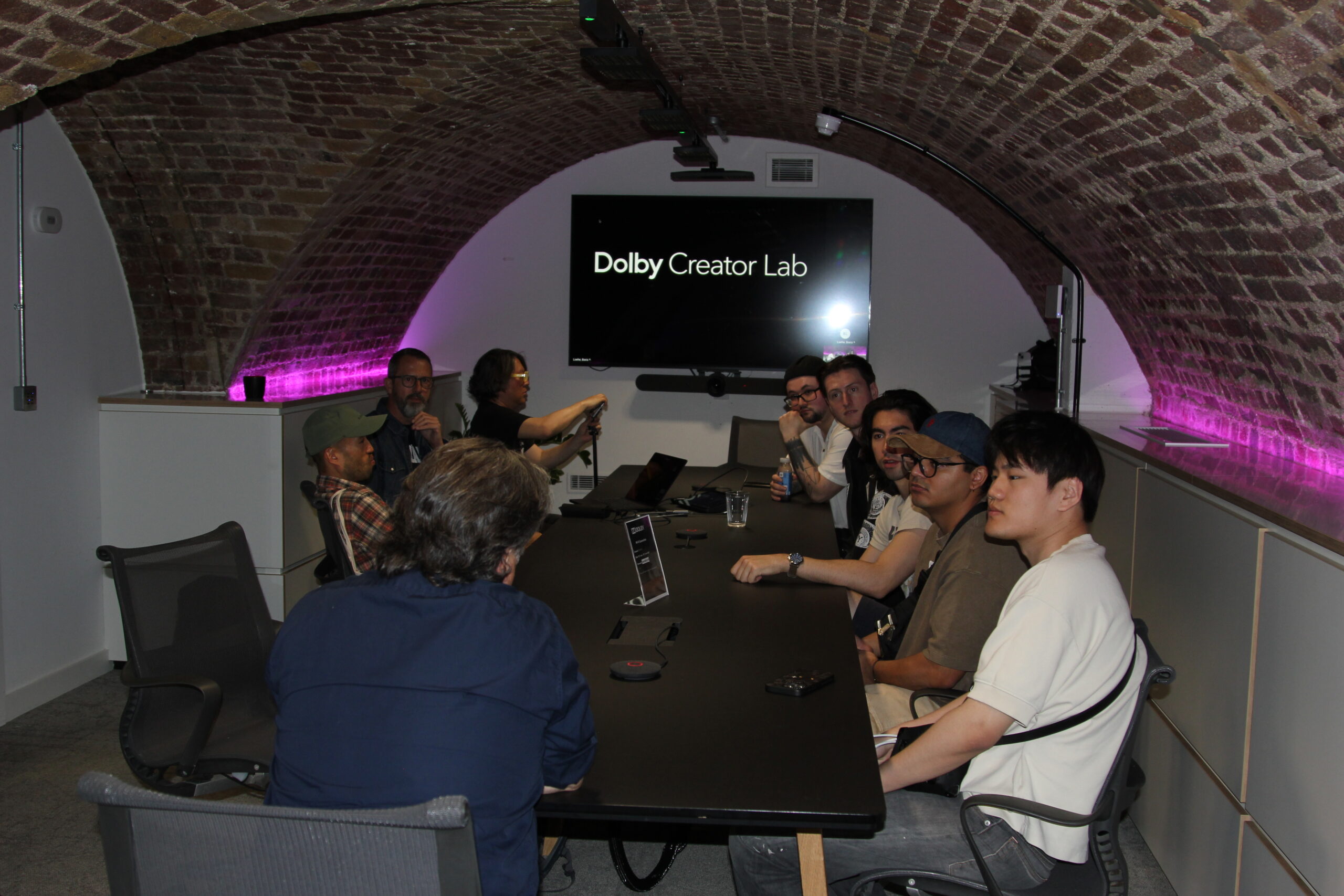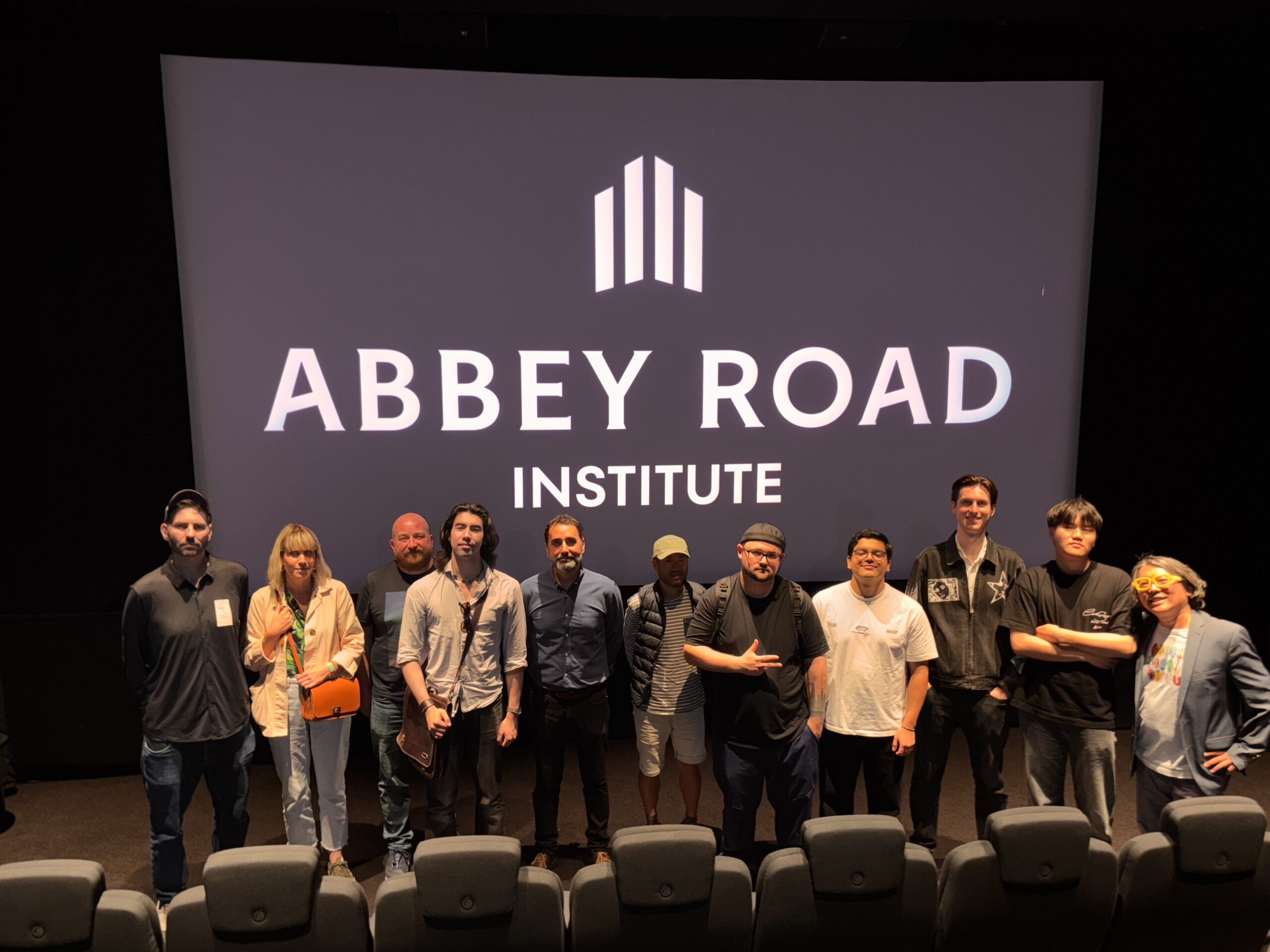A Student Experience: Exploring Dolby Atmos Mixing for Music
There’s no denying that Dolby Atmos mixing is an evolving art form. It’s an intricate and fairly new craft that allows you to experiment with music in ways that differ from your average mix.
In May, we launched our brand new Dolby Atmos Mixing for Music course. Taught by Grammy-Award-Winning Engineer, James Auwarter. Throughout the course, James teaches the fundamentals of DAW Setup, Atmos mixing workflows, quality control, and more. Students also get the opportunity to visit Dolby Soho for a tour, and later to present their final project for a conclusive screening with course leaders, friends and family.
Toni Norton Sitjar is a musician, producer, and sound engineer from Spain. In 2023, he moved to the UK to study our Advanced Diploma in Music Production and Sound Engineering. His main instruments are voice and guitar, and he is also a talented bass player, pianist, and drummer. Toni’s work specialises in producing live, instrument-based music. After graduating in June 2025, Toni returned to enrol in our brand-new Dolby Atmos course. We sat down with Toni to discuss his experience on the programme, learning from an array of critically acclaimed engineers, mixers, and producers, and the advice he would give to eager applicants.
Dive in!
HOW HAS YOUR EXPERIENCE BEEN ON OUR DOLBY ATMOS course?
I was previously enrolled in two engineering degrees, so I’m well acquainted with the educational system. Studying the Dolby Atmos Mixing for Music course has been the best. It has exceeded my expectations by a mile. Not only academically, but also in the enjoyable side of things and the atmosphere. Everyone studying here has gone through an interview process, which is designed to make a family here, and it’s worked perfectly.
WHAT DID YOU STUDY BEFORE APPLYING HERE?
I first tried Telecommunications Engineering and then changed majors to a new degree, back then in Mathematical Engineering Applied to Data Analysis. However, I didn’t finish that because I realised I was really passionate about music. While I could spend three hours studying Mathematical Engineering, I could spend all day learning about music it and the time would fly by. After doing some research, I discovered Abbey Road Institute and thought the Advanced Diploma in Music Production and Sound Engineering was a no-brainer.
WHAT INSPIRED YOU TO STUDY OUR DOLBY ATMOS course?
Well, firstly, because it’s what’s new and I like to stay up to date with technology. Prior to Dolby Atmos, most immersive formats didn’t quite work because only a very specialised portion of the consumers could experience them. Whereas Atmos is scalable, which means now anyone can enjoy it at home on headphones or soundbars. Furthermore, it is a new world of creative possibilities in music production, and I believe it’s the best way to experience music in a room nowadays.
What do you like about it?
I really like James. He goes the extra mile to make everything happen. He regularly brings guest speakers in and has partnerships with people. Given his experience, I think he’s one of the best to be learning from.
As I discovered in the Music Production course, this is a great place and institute to learn from. The atmosphere is positive, and everyone is ready to help at any time. Additionally, you have lots of time to experience on your own. That’s the thing about Atmos. You need time to spend in a room and learn about everything hands-on and in a very narrow listening sweet spot. On top of this, James offers one-to-one time to go over any projects and modules, which is not only great for your personalised learning process but also really helpful as Atmos can easily get complicated on the technical side of things.
How has the experience on this course been different to the ADVANCED DIPLOMA IN music production?
Firstly, it’s part-time, so it’s only once a week. Also, how James delivers and structures the classes are different. He calls it flipped learning, which means that before every class, you follow an assignment with several articles to study and topics to work on, and then in class, he goes over everything, making sure everything was understood and elaborating on it further. So while on this course, you get what you put into it, depending on how much you invest in it; in the end, James always explains things in class.

Dolby Soho, London
What key learnings have you taken away from the DOLBY ATMOS COURSE?
This may seem obvious, but the ever-evolving nature of a new format like Dolby Atmos means you constantly need to update your workflows and stay informed about the latest developments. But more importantly, you need to future-proof your mixes. That means referencing them on as many different playback systems as possible (Apple and non-Apple headphones, soundbars, car systems, and more) and always setting most of your binaural settings to ‘Near,’ ‘Mid,’ or ‘Far’ to ensure that as binaural algorithms evolve, none of your tracks are left behind.
What’s next for you?
Right now, I’m planning to go back to Majorca in Spain, where I’m currently based, to work on different areas of music production. But on Atmos specifically, I’m trying to maximise my time here (in London) to work on my Atmos portfolio and do as many mixes as I can. Therefore, I’m contacting the professionals I like to work with and asking them for mixes. I already have some contacts I’m working with, and hopefully, will continue in the future.
Are you actively trying to build new connections?
Always! In this case, with Atmos, it’s a great time to do so because it’s still fairly new and lots of people haven’t experienced it yet. Even high-profile artists. Thus, having all this studio time available here is a great opportunity to reach out to any artists or engineers you’d like to work with, even if it is for free. And no one’s going to refuse having a free mix because they have nothing to lose. There are lots of opportunities out there; it’s important to ask for them.
Lastly, what advice would you give to anyone INTERESTED IN LEARNING MORE ABOUT Dolby Atmos mixing?
On the learning side, it is quite technical, so it’s difficult to get into in the beginning. It’s different from stereo, and there are things like the mastering side which are a bit of a grey area and not so defined yet, so it’s ever changing. I would say, if you can learn the core from a professional and in a properly set studio, that’s always better.
On the other hand, when working in Atmos, don’t think of it as a new format you have to translate your stereo mix into, but rather as a whole new world of possibilities. So don’t be afraid to try bold ideas and be creative with all the extra space you have.

Dolby Soho, London
If you enjoyed reading this blog, check out Gear4Music’s How to Produce a Dolby Atmos Mix: A Step-by-Step Guide to discover more about the world of Dolby Atmos mixing. Additionally, you can find out more about our Dolby Atmos Mixing for Music curriculum.


